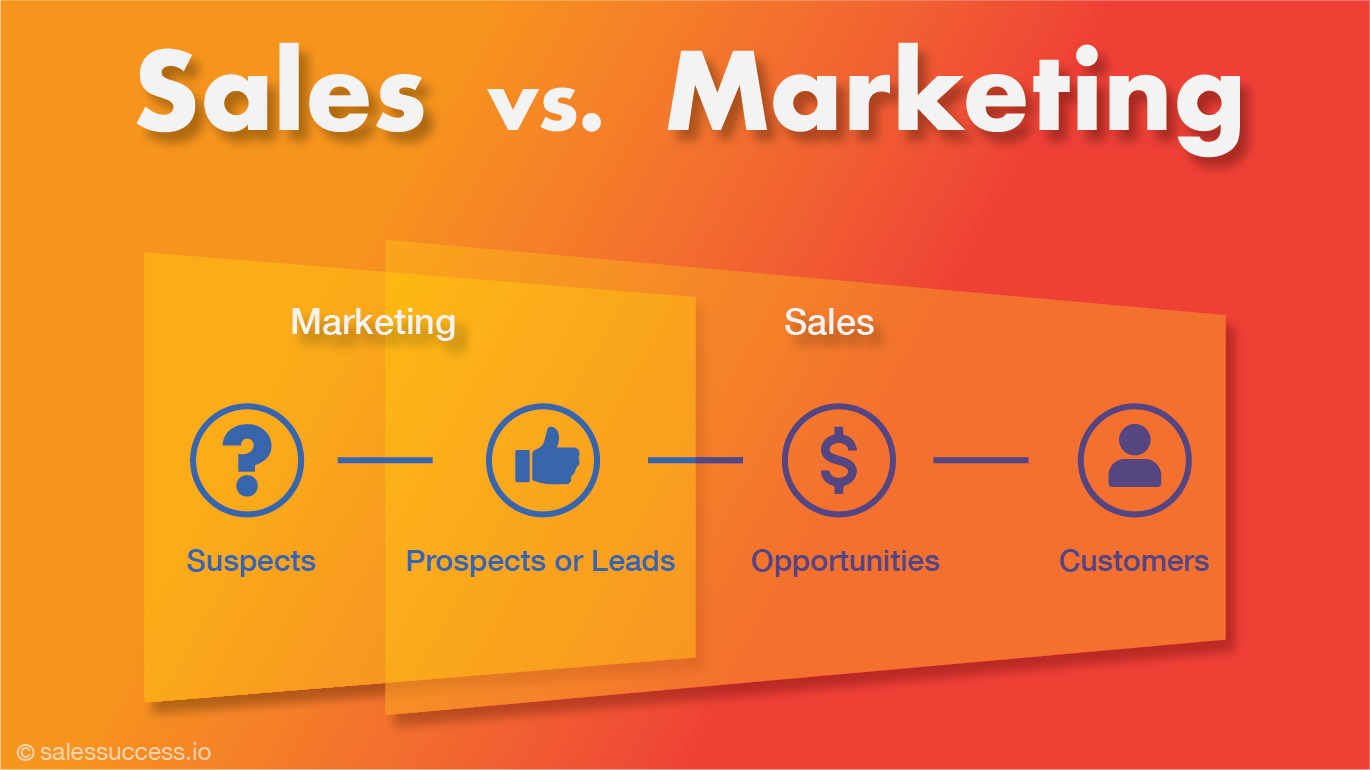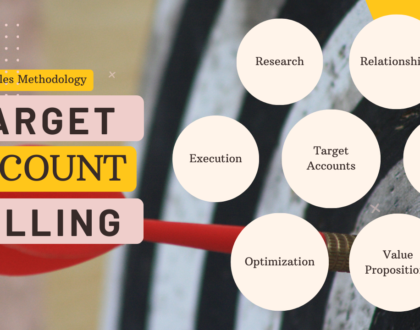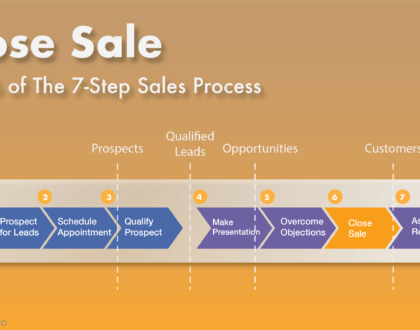Sales vs. Marketing: Understanding the Distinction

![]()
Sales and marketing are two critical business functions that often get used interchangeably. However, these two functions are entirely different and play unique roles in a company’s success.
In this article, we will explore the difference between sales and marketing and how they work together to convert leads into customers.
Marketing and Sales Conversion Process
Marketing and sales are two sides of the same coin. Together, they convert the universe of suspects for a company’s offerings into customers:
Suspects → Prospects or Leads → Opportunities or Deals → Customers
It is in this conversion process that the relation and difference between the two functions become evident.
Sales is a part of the marketing discipline yet emerged into a different field unto itself.
What is Marketing?
Marketing is the set of activities involved in the first conversion above.
Marketing defines the targets or suspects for a company’s offerings and systematically converts them into prospects or leads by raising awareness of and generating interest in the same.
Marketers use a process called segmentation, targeting, and positioning (STP) to pinpoint the target market segments with unmet needs that a brand should address and serve.
Following the STP process, products and services are defined and developed as part of a marketing mix that best addresses the needs of the target segments.
What is Sales?
In terms of the marketing vs. sales contrast, sales is the set of activities involved in the next two conversions above.
Prospects or leads are qualified and potential sales opportunities identified. Opportunities enter the sales pipeline or funnel and through a series of pipeline stages convert into sales.
MQL, SAL, and SQL
The handoffs of prospects or leads between marketing and sales happen as follows.
First, marketing runs campaigns to generate marketing qualified leads or MQLs from suspects.
MQLs are prospects or leads who have interacted with marketing content in the form of physical brochures or the website.
A typical example is when someone sees your company’s Google Ad online and by clicking it visits a landing page on your website where they fill out and submit a contact or lead form.
Next, marketing passes on the MQLs to sales. Sales does a visual checking to either accept or reject them based on pre-defined criteria. Accepted MQLs are called sales accepted leads or SALs.
Next, sales works on the SALs to qualify them.
Post qualification, the SALs convert into sales qualified leads or SQLs.
The rejected MQLs and SALs that do not convert into SQLs are worked on again by marketing, this time through long-term nurturing campaigns.
Long-term nurturing includes email marketing and remarketing campaigns in digital marketing.
TOFU, MOFU, and BOFU
In the marketing and sales conversion process above, not all suspects you start off with convert into customers. There will be a gradual drop-off in number through the various stages of the process.
The reduction in the count is best conveyed visually through an “inverted funnel” representation of the process called the marketing and sales funnel.
Suspects enter the top of the funnel (TOFU). A lesser count of prospects or leads enters the middle of the funnel (MOFU). An even lesser count of opportunities enters the bottom of the funnel (BOFU).
It must be evident now that marketing works on suspects in TOFU whereas sales works on prospects or leads in MOFU and opportunities in BOFU.
Although we converted the marketing and sales conversion process into a marketing and sales funnel above, the funnel is also called the customer funnel.
The inverted customer funnel essentially represents prospective customers’ readiness to conduct a sales transaction. A lesser number “exit” the funnel at the bottom than those who “enter” at the top.
The customers who conduct the sales transaction, in the end, become loyal customers if they are satisfied with their purchase experience.
Buyer’s Journey
The buyer’s journey is the process that a potential customer goes through to become a loyal customer. It consists of three stages: awareness, consideration, and decision.
The awareness stage is when a potential customer becomes aware of a particular product or service. This is often triggered by a problem that needs to be solved, a desire that needs to be fulfilled, or a need for information.
At this stage, the customer is not yet ready to make a purchase, but they are actively searching for information about the product or service.
The consideration stage is when the potential customer is actively considering purchasing the product or service. They have gathered information and are now weighing their options.
This is where the customer begins to compare different products or services and look at the features and benefits of each.
The decision stage is when the potential customer makes the final decision to purchase the product or service. This is often the most crucial stage in the buyer’s journey, as the customer is deciding whether or not to spend their money on the product or service.
It is important to note that the buyer’s journey is not a linear process. Customers can enter and exit the journey at any point, and they can also revisit previous stages.
Therefore, businesses need to create a holistic marketing and sales strategy that addresses the needs of the customer at each stage of the journey.
Conclusion
Sales and marketing are two sides of the same coin, working together to convert prospects into customers. While they have different functions and responsibilities, they are interconnected and rely on each other for success.
Sales teams need to focus on building relationships with prospects, understanding their unique needs, and crafting customized solutions that address those needs.
Marketing teams, on the other hand, need to create compelling content, engage with prospects through various channels, and educate them about the company’s offerings.
To achieve success in the modern business landscape, sales and marketing teams need to work together seamlessly, breaking down silos and collaborating closely.
This involves aligning their goals, sharing data and insights, and developing a joint strategy that drives revenue growth and customer satisfaction.
By understanding the sales vs. marketing distinction and working together effectively, companies can build a strong brand, increase revenue, and achieve long-term success.
Check out more videos on Sales vs. Marketing on our YouTube channel.



